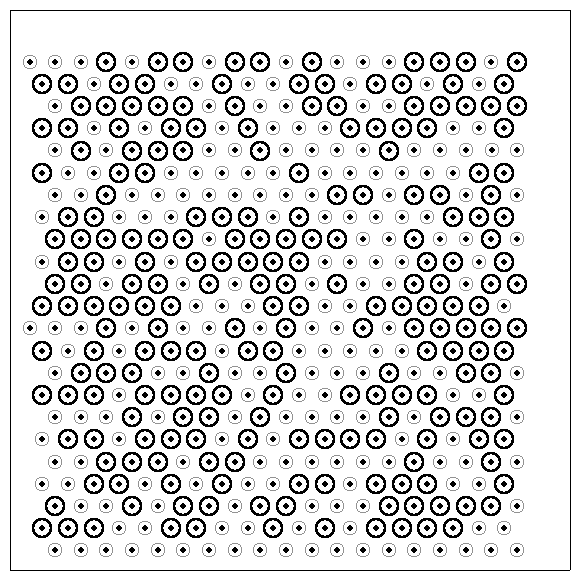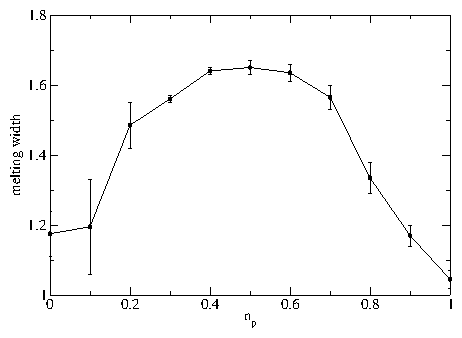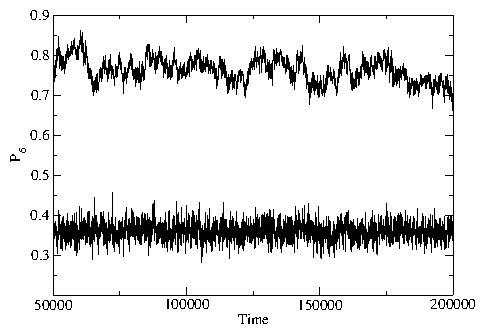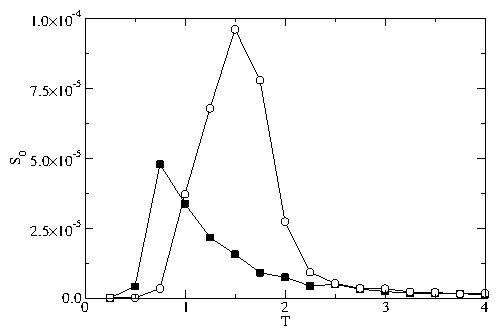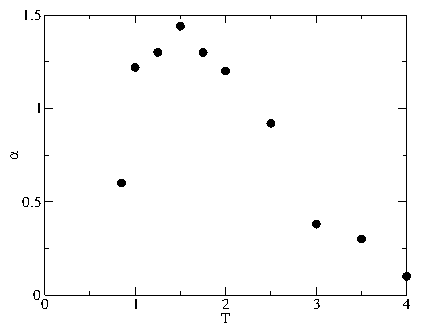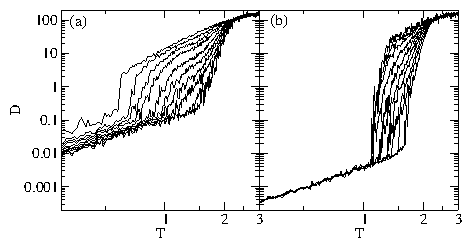 Figure 11:
(a) Diffusion D of the initially unpinned particles
vs T for a system with fp = 2.0 and
np = (left) 0, 0.1, 0.2, 0.3, 0.4, 0.5, 0.6, 0.7, 0.8,
and 0.9 (right).
(b) D vs T for the same system in (a) for the initially
pinned colloids at
np = (left) 0.1, 0.2, 0.3, 0.4, 0.5, 0.6, 0.7, 0.8, 0.9, and 1.0 (right).
Figure 11:
(a) Diffusion D of the initially unpinned particles
vs T for a system with fp = 2.0 and
np = (left) 0, 0.1, 0.2, 0.3, 0.4, 0.5, 0.6, 0.7, 0.8,
and 0.9 (right).
(b) D vs T for the same system in (a) for the initially
pinned colloids at
np = (left) 0.1, 0.2, 0.3, 0.4, 0.5, 0.6, 0.7, 0.8, 0.9, and 1.0 (right).
|
